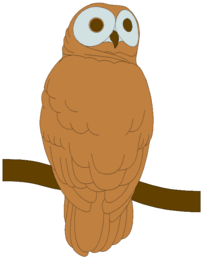SIMPLE LESSONS FOR PARTICIPANTS IN THE STARR-KING
DRUMMING-FOR-SPIRIT, ALWAYS-BEGINNING DRUM CIRCLE
 When starting to play a new-to-you drum, turn it over. If you can see all the way through to the head (the skin on the drum), hold and play the drum in a way that keeps the hole in the bottom off the floor, because that's where the sound comes out. For djembes and similar instruments that rest on the floor, hold the drum between your legs, and tip it forward (away from you) to give yourself the largest possible playing surface and avoid straining yourself.
When starting to play a new-to-you drum, turn it over. If you can see all the way through to the head (the skin on the drum), hold and play the drum in a way that keeps the hole in the bottom off the floor, because that's where the sound comes out. For djembes and similar instruments that rest on the floor, hold the drum between your legs, and tip it forward (away from you) to give yourself the largest possible playing surface and avoid straining yourself.
If you can't see the head from the bottom, you may hold the drum in your lap, on the floor, or anywhere that is comfortable for you.
Posture is important when you are playing any drum. Sit or stand comfortably, with your body relaxed and balanced on itself (let your skeleton bear your weight). Breathe "yogically," and hold your shoulders back and down, while relaxed. Whenever you feel yourself becoming tense, stop playing; consciously relax; resume a comfortable, balanced position with your drum; and begin again.
Many indigenous societies believe that there are already at least three spirits in the drum--the spirit of the tree from which the shell was made, the spirit of the animal whose hide was used for the head, and the spirit of the maker. Consider allowing YOUR spirit to play with those already present to make music! If your drum is made of synthetic (man-made) or processed materials, you may recognize and honor all of the beings whose bodies made the oil from which it was made, the people who invented or discovered how to use the materials, and the people who actually made your drum.
 Treat the drum and the rhythms you play with respect.
Treat the drum and the rhythms you play with respect.
There is no "right" way to play any drum. There are "culturally specific" ways to play many of them, but you do not need to know these or worry about them when you are in this drum circle. Try holding the instrument in your hands--in your dominant or nondominant hand, reaching out or on your lap, horizontally or vertically, between your legs, standing up, any way that might be comfortable. Play it with your hands, or just your fingers, or even just your nails; hit it against different parts of your body (your wrist, your knee, your hip) if possible, or use a mallet (try several different ones until you find one you like). Develop your own "repertoire" of sounds to use to express yourself. The important thing is to feel very comfortable with the drum you are playing.
You are welcome to switch to another instrument when we are "between rhythms," or whenever else you feel like it (please try not to disturb the other players if we are in the middle of something).
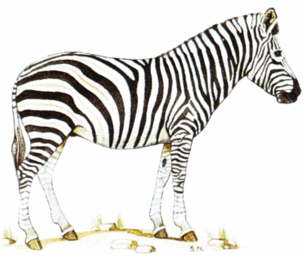 There are at least two different notes on your drum. There is a deep, resonant sound toward the center of the head; strike the drum with your hand flat against the surface of the center of the drum head, and let your hand bounce off. A slightly higher note can be found on the edge of your drum; strike the drum (including the rim) sharply with one or more fingers. See how many different notes you can find on your drum. Can you find the "sweet spot" (the spot that resonates the most with you)?
There are at least two different notes on your drum. There is a deep, resonant sound toward the center of the head; strike the drum with your hand flat against the surface of the center of the drum head, and let your hand bounce off. A slightly higher note can be found on the edge of your drum; strike the drum (including the rim) sharply with one or more fingers. See how many different notes you can find on your drum. Can you find the "sweet spot" (the spot that resonates the most with you)?
Use your imagination to discover other ways of getting sounds from your drum. Use a mallet if you can't or don't want to use your hands, or if you like the sound of the striker better (but be careful and respectful of the drum head. A good rule of thumb is to use "skin on skin"--that is, hit the skin of the drum with the skin of your hand or the soft part of a beater). Hit the beater head on the drum head; experiment with all of the places on the head. Don't forget the side of the drum, and the other end of the mallet! You can also just brush or swipe your hand across the head to get a "brush" sound. Now try scraping one or more of your nails on the head or side of the drum. Your only limits are those of your imagination!
"Open" sounds occur when you bounce your hand or fingers off the head of the drum (open means you can hear the note ring after you hit it). "Closed" sounds occur when you leave your hand or fingers on the head after you hit it. Experiment until you can do open and closed deep tones and rim tones deliberately.
SOUNDS OF THE ELEMENTS:
Earth: The djembe "bass" or dumbek "doum" sound, found by bouncing the flat of your palm or a mallet off the center of the drum head.
Water: Roll your fingertips in the area between the center of the drum head and the rim, especially at the drum's "sweet spot."
Fire: A hard, rim sound, made by hitting the rim of the drum with the part of your hand where the fingers join your palm, or with your index or ring finger (a djembe "tone" or a doumbek "tek/ka" sound).
Air: Brush your hand or fingernails across or around the drum head.
Ether: Silence.
Wood: Wood sounds--for example, a wooden stick hitting the drum shell, or hitting wooden blocks or sticks together.
 During the opening part of our circle--when we are honoring the directions, spirits, and elements on the medicine wheel--drum the rhythms together. Relax and FEEL the rhythm; use imaging and visualization to help if they work for you.
During the opening part of our circle--when we are honoring the directions, spirits, and elements on the medicine wheel--drum the rhythms together. Relax and FEEL the rhythm; use imaging and visualization to help if they work for you.
When playing rhythms with other people, simply relax. Use all of your senses in discovering the rhythm. Close your eyes and just listen. Open your eyes and observe the other people. Start to play when you feel comfortable doing so. Play in as many different ways as you can. Which one feels the best to you? Never strain yourself--if you feel yourself getting tense, stop, mindfully relax, close your eyes, and start again when you feel the pulse. Don't overthink. Drumming is all about getting OUT of your head, and playing from your heart.
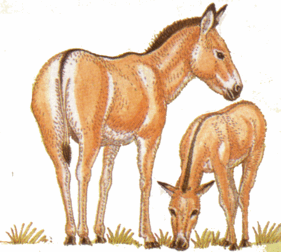
Once you have the feel of the rhythm, and we have played it together for a few times around, feel free to start playing variations of the basic rhythm. Three simple types of variations are:
(1) Leave some notes out.
(2) Add some notes in the spaces between the basic notes.
(3) Substitute a sound with a different sound.
EVERYTHING YOU DO IS FINE, as long as what you play fits in with the "pulse" of the basic rhythm. If you don't like something you just played, repeat it once, then go back to the basic rhythm.
When we relax and play together, eventually we ENTRAIN with each other--our rhythms become as one. Entrainment is a universal principle that can be seen with almost any type of rhythm. The feeling CAN be indescribable, but it does help us feel our natural connections with our instruments and with each other. Never FORCE the feeling--rather RELAX into it, and all will be well!
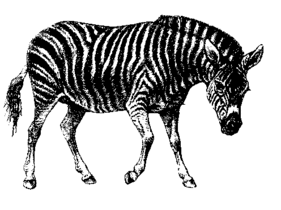 In modern, Western society, we tend to have short attention spans, get bored quickly, and long for variety--we seldom allow things to evolve naturally, or revel in the sameness we experience when playing a simple rhythm in the same way for a long time. Once again, you are invited to relax, allow rhythms to develop or evolve over time, listen to others, and respond rhythmically to rhythmic ideas expressed by others in the circle. PLAY, and HAVE FUN! Nothing can go wrong if everyone stays mindful.
In modern, Western society, we tend to have short attention spans, get bored quickly, and long for variety--we seldom allow things to evolve naturally, or revel in the sameness we experience when playing a simple rhythm in the same way for a long time. Once again, you are invited to relax, allow rhythms to develop or evolve over time, listen to others, and respond rhythmically to rhythmic ideas expressed by others in the circle. PLAY, and HAVE FUN! Nothing can go wrong if everyone stays mindful.
Play Yourself: Playing Body-Beat (a game with instructions on cards, created by Christine Stevens), using first your body, then transferring the rhythm to the drum, seems to really help people (1) feel the pulse, and (2) have the confidence and courage to "do their own thing" while listening to and responding to others. Feel free to request this, if we don't do it early on in a circle. And always remember that "body percussion" is a very ancient tradition. Try each of these in turn, once or twice for each beat. It's best to play yourself, but feel free to ask others if it's OK for you to play them.
Snap your fingers.
Clap your hands.
Tao or stamp your feet.
Slap your thighs, chest, or belly with one or both hands.
The Pulse is the Key to Everything: The most important thing to keep in mind as you drum with a group is both the sound and the feel of the pulse, the heavily accented beat that occurs regularly and evenly throughout the rhythm. As you gain experience, you will find it gets easier to feel the pulse even when no one is playing it! Because it is always there, and you can feel its presence in your body as you play, you can always return to it. As you begin to play, playing the pulse will help you entrain with the group. As you experiment with variations, you can build on it and around it. When you feel yourself getting lost, tired, bored, tense, or frustrated, do this:
Stop playing.
Relax.
Listen.
Find the pulse.
Begin again when you are ready.
Playing only the pulse is a marvelous way of supporting the group while fulfilling a vital function even when you are just beginning to drum. As you get more and more comfortable finding and playing the pulse, you will soon find yourself matching the volume of the other players or the facilitator almost without thinking, adding your own rhythmic variations without feeling rushed or nervous, and hearing and echoing or responding to the variations and solos of other people in the group--congratulations, you're having fun playing nusic!
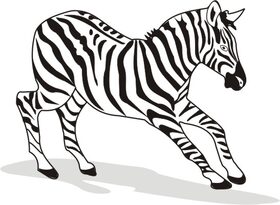 Playing Well With Others: The main things to remember when playing with others--whether as individuals in a circle or as a group playing for an audience--are:
Playing Well With Others: The main things to remember when playing with others--whether as individuals in a circle or as a group playing for an audience--are:
(1) Keep your own playing as simple as possible.
(2) Listen to the other players, and play things that complement them.
(3) Play at the same volume as the group overall.
Some of us would like to participate in the church worship services--which will become more welcome when we play consistently well, holding the groove steady regardless of what others are throwing our way! However, full participation in the circle going on in the present moment is our focus, so don't worry about anything, and let your spirit entrain and fly with those of your current companions!
 Chanting and Singing While Drumming: Adding chants and simple songs to your drumming is easy, even doing it at the same time. Start with simple chants or song phrases of only a few notes, a few syllables, and primarily vowel sounds! The one we started with goes Ho-E Yo-E Hay-E, to the tune of (in probably not-quite-right solfeggio):
Chanting and Singing While Drumming: Adding chants and simple songs to your drumming is easy, even doing it at the same time. Start with simple chants or song phrases of only a few notes, a few syllables, and primarily vowel sounds! The one we started with goes Ho-E Yo-E Hay-E, to the tune of (in probably not-quite-right solfeggio):
Do-o-re re • Do-o-re re • Fa re re • • • • •
If you are feeling the pulse of the rhythm-song in your body, just add the vocalizations to your normal breathing, in time with that pulse, as you hit the drum!
The easiest way to drum and sing/chant at the same time is to play a very simple pulse rhythm or heart-beat rhythm quietly and steadily. When you are ready, add the words (or seed syllables) in a sing-song or chanting voice, in rhythm with your already-established rhythm. For example:
| Count | 4 | 1 | 2 | 3 | 4 | 1 | 2 | 3 | 4 | 1 | 2 3 4 1 . . . |
|---|---|---|---|---|---|---|---|---|---|---|---|
| Play | X | X | X | X | X | X | X | X | X | X | X X X X . . . |
| Sing | Kum ba | ya | m'lord | Kum ba | ya | Kum ba | ya | Kum ba ya . . . |
Sometimes it helps when learning to chant and drum at the same time, to chant the names of the notes you are playing. Almost all teachers of drumming in the African and Middle Eastern styles say "If you can say it, you can play it." When you are learning the rhythm, say the words first, then add the notes. After you have internalized the rhythm, you can substitute other words, seed syllables, or other vocalizations for the names of the notes. Thus, when we are learning "Fanga," we may start with the mnemonic (learned from Kathy Quain):
1 2 3 e + a 4 5 6 7 + 8
"Hey here's a rhythm. It's called Fanga!" (Χ2) The names of the sounds (Bass = B, T = Tone) are:
B B T T-T (rest) B B T-T (rest) (Χ2) Later, we can substitute the words of the song
Fan - go a - la - fi - a
Ash- é A shé (Χ2)
Developing your own mnemonics and creating your own chants to go with the rhythms you use to express yourself during our Rhythmic Naming activity or whenever you want to be able to quickly commit a rhythm or chant to memory will help you memorize, internalize, then easily remember and reproduce it whenever you want.
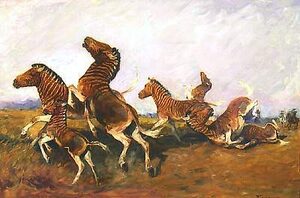
Playing Multiple Parts.
As of January 2015, we are learning to play sessions with multiple parts. First, we chose which of the opening rhythms (Go A-Way [B T T • ]; Come to Me [T B T • ]; Hummingbird Flight [T-T T T T]; Coyote Call [T T T-T T]) we wanted to play, then played them simultaneously! After a while, when each individual part could be heard consistently, we switched parts at will, and it worked well. Later, we learned the multipart rhythm taught by Heather Holland: Part 1 = Ayoub; Part 2 = Frog Legs Taste Like Chicken; Part 3 = Get Down People Get Down. We played each part separately, then the first two together, then all three together. Some people played only one part, some cycled through all three, and some just switched between two parts. Eventually, we played whatever part we wanted, and then added variations at will. Both exercises were lots of fun, and everyone kept up and held their parts together throughout. You can too!
Some of the things to keep in mind are:
In the beginning, count if necessary, until you are sure of where the "1" is. "Speak" your part before playing it on the drum, if that helps.
At first, concentrate on your own part, making sure you hit the drum at each beat (up or down) indicated by the rhythm.
When you are sure you are hitting the drum at the right times, work on your sounds, so that all of the bass notes and tone notes sound the same as the other notes of that kind.
When you start adding variations, start by substituting the sounds for each other.
Keep the speed fairly slow and even, but play at the speed of the others.
If the speed gets too fast, hit only what you would consider the important notes (e.g., every other note; only the pulse; only where your part is the only one playing a note).
Remember to listen to the other parts--maybe close your eyes and just listen for a while.
If you feel yourself getting too tense, stop playing, relax, adjust your position, then listen and start again when you are ready.


